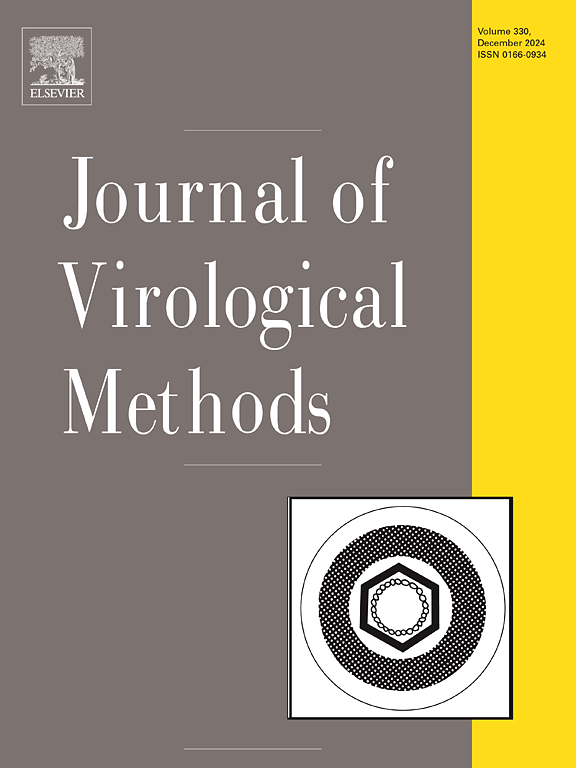Development of neutralization tests using single-round infectious particles and cytopathic effect as an alternative method for measuring antibody titers against Japanese encephalitis virus in national epidemiological surveillance program of vaccine-preventable diseases in Japan
IF 1.6
4区 医学
Q3 BIOCHEMICAL RESEARCH METHODS
引用次数: 0
Abstract
The “National Epidemiological Surveillance of Vaccine-Preventable Diseases” is conducted annually in Japan for various infectious diseases. A susceptibility survey for Japanese encephalitis was conducted by measuring antibody titers using a focus-forming assay. However, this method is complicated to operate and hard to count small focuses; therefore, the development of new measurement methods is required. In this study, we developed and evaluated a single-round infectious particles (SRIPs) assay method and a cytopathic effect (CPE) assay method. The SRIPs assay showed a strong correlation (R = 0.94) with the focus-forming assay. The SRIPs assay method is not only simple and can be expected to improve accuracy, but also has the advantages of extremely low pathogenicity and safety for the operator. The CPE assay also showed a strong correlation (R = 0.80) with the focus-forming assay. It has the advantage of requiring almost no reagents and is easy to interpret. Both SRIPs and CPE assay methods can be used as alternatives to the focus-forming assay method, but further characterization of each method is necessary before one is selected for routine use.
在日本疫苗可预防疾病的国家流行病学监测规划中,发展单轮感染颗粒中和试验和细胞病变效应作为测定乙型脑炎病毒抗体滴度的替代方法
日本每年对各种传染病进行“疫苗可预防疾病的全国流行病学监测”。对日本脑炎的易感性调查进行了测量抗体滴度使用病灶形成试验。但该方法操作复杂,小焦点难以计数;因此,需要开发新的测量方法。在这项研究中,我们开发并评估了一种单轮感染颗粒(srip)检测方法和一种细胞病变效应(CPE)检测方法。SRIPs法与病灶形成法有很强的相关性(R = 0.94)。srip检测方法不仅操作简单,可提高准确性,而且具有极低致病性和对操作人员安全的优点。CPE法与病灶形成法也有很强的相关性(R = 0.80)。它的优点是几乎不需要试剂,而且易于解释。srip和CPE检测方法都可以作为病灶形成检测方法的替代方法,但在选择一种方法作为常规使用之前,需要对每种方法进行进一步的表征。
本文章由计算机程序翻译,如有差异,请以英文原文为准。
求助全文
约1分钟内获得全文
求助全文
来源期刊
CiteScore
5.80
自引率
0.00%
发文量
209
审稿时长
41 days
期刊介绍:
The Journal of Virological Methods focuses on original, high quality research papers that describe novel and comprehensively tested methods which enhance human, animal, plant, bacterial or environmental virology and prions research and discovery.
The methods may include, but not limited to, the study of:
Viral components and morphology-
Virus isolation, propagation and development of viral vectors-
Viral pathogenesis, oncogenesis, vaccines and antivirals-
Virus replication, host-pathogen interactions and responses-
Virus transmission, prevention, control and treatment-
Viral metagenomics and virome-
Virus ecology, adaption and evolution-
Applied virology such as nanotechnology-
Viral diagnosis with novelty and comprehensive evaluation.
We seek articles, systematic reviews, meta-analyses and laboratory protocols that include comprehensive technical details with statistical confirmations that provide validations against current best practice, international standards or quality assurance programs and which advance knowledge in virology leading to improved medical, veterinary or agricultural practices and management.

 求助内容:
求助内容: 应助结果提醒方式:
应助结果提醒方式:


